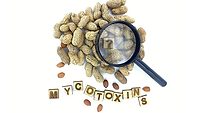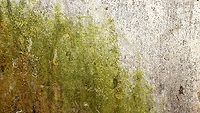The Important Place of Mold Stain Removers in the Remediation Industry
Answering four major questions about this popular industry product

New York State’s new mold licensing laws created quite a push for mold remediation training when they went into effect on Jan. 1. As the first organization approved by the State of New York to offer the mold remediation contractor training class, we were blessed to help a large group of New Yorkers understand their responsibilities under the law; as well as effective and efficient ways to conduct mold remediation. It was during these classes, more so than other mold training classes around the country, that we received pointed questions about chemicals used during the remediation process.
Part of this focus on chemicals was because the New York State law has a specific section which states that:
A mold assessment licensee who indicates in a remediation plan that a disinfectant, biocide, or antimicrobial coating will be used on a mold remediation project shall indicate a specific product or brand only if it is registered by the United States Environmental Protection Agency for the intended use and if the use is consistent with the manufacturer's labeling instructions. (Article 32; Licensing of Mold Inspection, Assessment, and Remediation Specialists and Minimum Work Standards; Title 2, Section 945.3)
Given that language, many students asked specifically about whether some of their favorite mold stain removing products were "legal" to continue using in New York. When pressed for details, a number of products well-known in the industry were mentioned. Those that received the most frequent comments from the students included Fiberlock’s Advanced Peroxide Cleaner (APC), Serum’s 1000, Fast Mold Removal’s of MMR Mold Stain Remover, Concrobium's Mold Stain Remover, and Sporicidin’s Mold and Mildew Stain Remover.
Since there was no comprehensive source for answers about mold stain removers, Wonder Makers reached out to some of the manufacturers for a response. Recognizing the need for unbiased information, Fast Mold Removal (FMR) commissioned research designed to help the students and others in the restoration industry, work through the issue of mold stain removers. Our approach was to break the bigger question of the appropriateness of mold stain removers for mold remediation into some smaller parts:
- How do the various products work?
- What do the products actually do?
- What do the manufacturers claim?
- What do the rules or standard of care documents specifically say about mold stain removers?
It Is All About Chemistry
While many individuals go a little "wobbly" when you start throwing chemical jargon at them, the basics about mold stain removers can be explained in simple fashion. In the most basic sense, understanding the effectiveness, and associated dangers, of the various mold stain removing products starts with knowing about the type of product being used.
While there may be other formulations, most of the major professional-grade mold stain removers fall into one of four basic categories. There are a number of hydrogen peroxide-based products. A quick check of the labels show that these stain removers have anywhere from 6% to 20% hydrogen peroxide as their main ingredient. Unless they are buffered, the pH level on some of the hydrogen peroxide stain removers can get as low as 2.5 -- acidic enough to cause significant skin or eye injuries. Also on the acidic side are the mold stain removers that utilize peracetic acid as their active ingredient.
Other mold stain removers use sodium hypochlorite, the basic ingredient of bleach, as their active ingredient. Fortunately, most sodium hypochlorite-based stain removers sold to the restoration industry are buffered closer to a neutral pH level as compared to the off-the-shelf products like household bleach or pool sanitizer. Buffering brings pH level down from the 12.5 -- 13 range (considered to be a strong alkaline by chemists and safety professionals alike) to eight or nine.
A smaller niche in the mold stain remover marketplace is held by those products that use enzymes as their active ingredients. Typically, the enzymes included in the stain remover are used to "digest" different parts of the mold.
Do Stain Removers Kill Mold?
In reading marketing information for mold stain removers, it is often difficult to figure out what the products actually do. One of the biggest debates in the industry is whether mold stain removers kill mold. Common sense would say using strong acid or alkaline on mold colonies would actually damage some of the fungal structures. Indeed, various scientific reports put out by manufacturers of some of the most common mold stain removers use terms such as "dissolve", "oxidize", "breakdown", "destroy", and "reduce the viability" to describe their product’s action on fungal organisms.
However, these claims have never been put to the test through the traditional process of applying for EPA registration as a fungicide with an actual kill claim. This is easily verified by the fact that no EPA registration number was found on the labels of any of the specific products mentioned earlier in this article. Indeed, a close review of the marketing data reveals that none of the manufacturers are using language to describe their mold stain removers that would fall into the category of meeting the EPA's definition of a kill claim.
What Do They Claim, Where Do They Fit?
This presents an interesting scenario. If the mold stain removers have some impact on the fungal material but are not registered as a fungicide (i.e., mold killer) then what role do they play in the mold remediation industry? The answer is quite simple: the products are available to do as the label says -- remove mold stains. While the language in some of the marketing materials can get a bit fuzzy, the stated purpose of the stain removers is to remove discoloration. Any additional benefit that is derived from the use of the product is an extra.
Therefore, in order to figure out where stain removers fit in the mold remediation process, we can start with a quick restatement of what they are not. Stain removers formulated for mold typically do not qualify as a disinfectant, biocide, or antimicrobial coating since they are not EPA registered as making a “kill claim”. Looking at both state regulations and the current industry standard of care, mold stain removers are not part of the actual remediation process.
Physical removal, not chemical treatment, is the core of mold remediation, even if the chemical used actually does kill the mold. This is emphasized in multiple documents including the IICRC/ANSI S520 Standard for Professional Mold Remediation, New York City's Guidelines on Assessment and Remediation of Fungi in Indoor Environments, OSHA’s A Brief Guide to Mold in the Workplace, EPA’s Mold Remediation in Schools and Commercial Buildings, and FEMA’s Cleaning Flooded Buildings. Stated bluntly, if stain removers are used for mold remediation, particularly as a stand-alone process, then it is neither legal in several states nor considered to be consistent with the standard of care anywhere in North America.
This is probably why the manufacturers of mold stain removers do not overtly advertise their products as performing mold remediation. However, there is interesting language from the S520 document which seems to apply to the stain removers. Although it comes from the section on content cleaning rather than structural remediation, section 14.3.3 of that document discusses “Appearance Enhancement”. Specifically, that section in the newly released third edition (December 2015) states:
Although removing contaminants is the primary focus of mold remediation, it is recommended that customer expectations be addressed and the contents be “appearance enhanced” to the extent practical before being returned to the customer.
That section also offers some interesting information related to science and practical experience. It specifically makes the distinction between mold stains and fungal contamination when it notes:
The presence of visible stains is not an indication that an item is contaminated. The removal of mold stains can be included in appearance enhancement.
As such, it is clear that mold stain removal is not a substitute for mold remediation. Instead, such activities should follow or enhance traditional mold remediation activities that include such steps as: isolation, set up of engineering controls, source removal (which includes removal of mold contaminated porous materials or the removal of mold from the surface of nonporous materials), detailed cleaning, and post remediation activities to ensure that the fungal problem was resolved properly.
A remediation that completes the fungal removal but leaves stains is not likely to meet a customer's expectation of the end result of the removal process. Putting it simply, “scientifically clean” is not necessarily the same as “customer clean.” While “scientifically clean” for mold remediation is defined as a normal fungal ecology, “customer clean” means that the finished project looks good and smells clean. Meeting that customer expectation may only be possible if a mold stain remover is employed on the project unless the contractor wants to resort to something much more aggressive, and usually expensive, such as dry ice blasting or detailed sanding.
Pulling It All Together
The student-driven foray into the world of mold stain removers resulted in answers to a number of important questions. Along the way, it was discovered that many stain removers damage the mold or break its bonds with the surface in addition to removing the color. But it is also clear that the effectiveness of mold stain removers varies depending on the product, type of mold present, extent of the colonization, surface porosity, application process, and amount of residual fungal material or debris also present on the surface being treated.
The research to answer the students’ questions also led to the inescapable conclusion that in addition to the benefit of appearance enhancement from the use of mold stain removers there are some risks. Since the chemistry differs for each product, the specific risks are also product dependent. Although there are general concerns about chemical exposures, particularly respiratory and eye irritation, for all products the specific type of personal protective equipment (PPE) must be matched to the particular hazards posed by the selected stain remover. Secondary damages to surfaces, potential reaction by the occupants to chemical residues, and damage to mechanical systems are all concerns that must be addressed through proper use of mold stain removers.
To balance those potential drawbacks with the benefits of using a mold stain remover, remediation contractors should make sure they have answers to several key questions before they start the phase of any project which involves mold stain removers:
- Are sensitized individuals involved?
- Does the scope address all aspects of the water damaged building?
- What clearance criteria will be used?
- Are there state regulations to follow in addition to the industry standard of care?
- Will appearance enhancement be added to the remediation effort?
- What sort of stain remover will be used?
- What are the risks and benefits of that particular product?
Finally, consultants and contractors need to be careful when specifying or quoting mold stain removers as part of the mold remediation project. They need to make sure that the language in their documents clarifies that the use of mold stain removers is for appearance enhancement and is an adjunct to other activities that actually remove the mold and reinforces the concept that killing mold or removing the colors associated with fungal growth does not meet the definition of mold remediation.
Looking for a reprint of this article?
From high-res PDFs to custom plaques, order your copy today!









